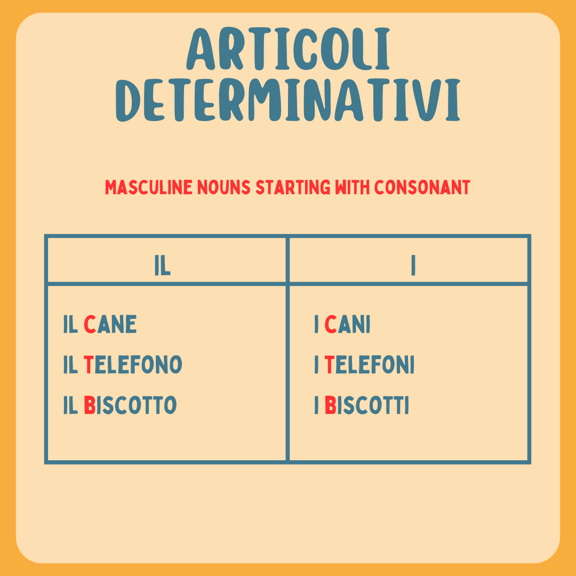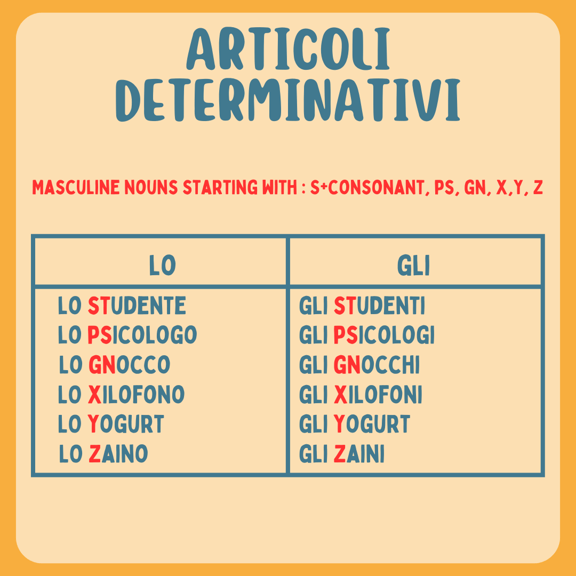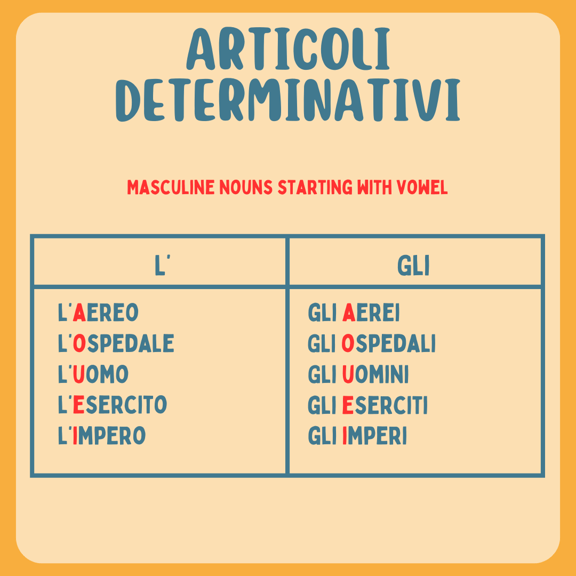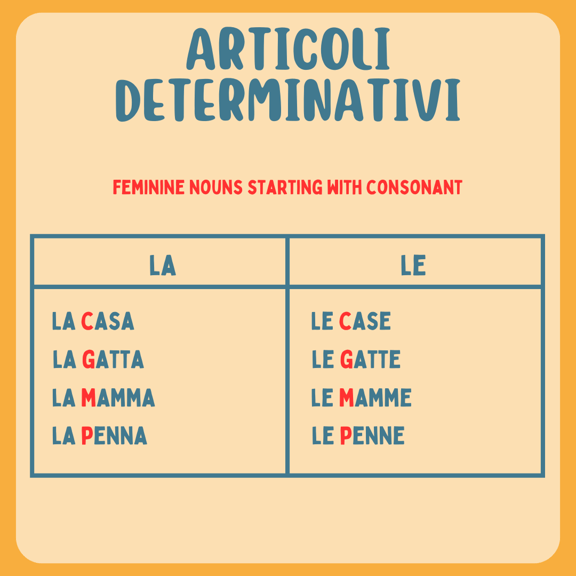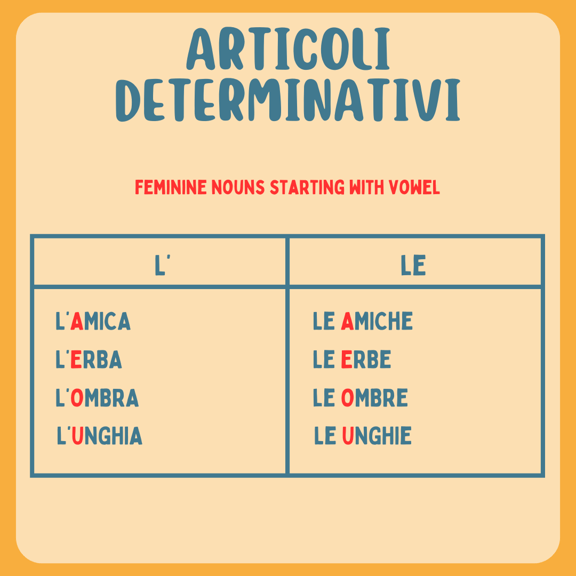The definite article
How to use the definite article in Italian
Definite articles are a fundamental component of the Italian language. They precede nouns to indicate their gender and number and to specify that the object named is known to the speakers. Although they may seem simple, the Italian definite articles vary in form depending on the gender of the noun they accompany and the initial letter of the following word. This article explores the rules and uses of definite articles in Italian, offering students practical tools for their correct use and a better understanding of the formation of articulated prepositions.
What are definite articles?
Definite articles are words that are placed before nouns to indicate their uniqueness. The English equivalent is "the". In Italian, the form of the article changes based on the gender (masculine or feminine), number (singular or plural), and the initial letter of the noun that follows.
Forms of Definite Articles
Masculine Singular:
Il is used before masculine singular nouns that begin with a consonant (e.g., il libro - the book).
Lo is used before masculine singular nouns that begin with s + consonant, z, ps, gn, x, y (e.g., lo zaino - the backpack, lo psicologo - the psychologist).
L' is used before masculine singular nouns that begin with a vowel (e.g., l'amico - the friend).
Feminine Singular:
La is used before feminine singular nouns that begin with a consonant (e.g., la casa - the house).
L' is also used here for feminine singular nouns that begin with a vowel (e.g., l'arancia - the orange).
Masculine Plural:
I is used before masculine plural nouns that begin with a consonant (e.g., i libri - the books).
Gli is used before masculine plural nouns that begin with a vowel, or with s + consonant, z, ps, gn, x, y (e.g., gli amici - the friends, gli zaini - the backpacks).
Feminine Plural:
Le is used before all feminine plural nouns, regardless of the initial letter (e.g., le case - the houses, le arance - the oranges).
Importance of Definite Articles in the Formation of Articulated Prepositions
Definite articles not only define the gender and number of the noun but are also crucial in the formation of articulated prepositions. Articulated prepositions are created by the merging of a preposition (such as "di", "a", "da", "in", "su") with the definite article that follows. For example:
"di" + "il" = "del"
"a" + "le" = "alle"
"da" + "lo" = "dallo"
"in" + "l'" = "nell'"
"su" + "i" = "sui"
Understanding definite articles is therefore essential for correctly using articulated prepositions, a key aspect of Italian grammar that affects how Italians express concepts of possession, place, direction, and more.
Tips for Correct Use
Pay attention to gender changes: Some nouns change gender in the plural (e.g., il dito, le dita - the finger, the fingers). Make sure to change the article accordingly.
Practice with proper names of places: Articles are often used with names of countries, regions, and rivers, but there are specific rules depending on the gender and number (e.g., la Francia - France, gli Stati Uniti - the United States).
Observe and imitate: Listen carefully to how native speakers use articles in different situations. Reading extensively in Italian can also help strengthen the use of articles.
Definite articles are small but powerful allies in constructing meaning in Italian. Once mastered, they will make your Italian more fluent and natural. Continue to study and practice them, and you will soon see results in your Italian language learning journey. Happy studying!
